Godzilla Against Mechagodzilla (2002)
Directed by: Masaaki Tezuka
Written by: Wataru Mimura
Starring: Kana Onodera, Kô Takasugi, Shin Takuma, Yumiko Shaku
HCF REWIND NO. 208: GODZILLA AGAINST MECHAGODZILLA AKA GOJIRA TAI MEKAGOJIRA [Japan 2002]
AVAILABLE ON DVD
FEATURED MONSTERS: GODZILLA, MECHAGODZILLA
RUNNING TIME: 89 min
REVIEWED BY: Dr Lenera, Official HCF Critic
Since Godzilla’s attack on Japan in 1954, monsters such as Mothra and Gaira have invaded Japan. Unable to replicate the Oxygen Destroyer which killed Godzilla, Japan develops Masers Cannons to use against these creatures. In 1999, Lieutenant Akane Yashiro is unable to kill a new member of Godzilla’s species during her first fight and is made a scapegoat for the military’s losses during the battle and transferred to a desk job. Over four years, scientists, including single father Tokumitsu Yuhara, build a bio-mechanical robot from the original Godzilla’s skeleton and Godzilla DNA in the bones, which is inducted into the JSDF with Akane as its main pilot. However, memories of Akane’s actions during the original fight still linger, and one of her squadron mates, Susumu Hayama, holds her responsible for the death of his brother….
Yes you read that right. It’s Godzilla Against Mechagodzilla, not Godzilla Vs Mechagodzilla. This is presumably because there had already been two films with that title, though replacing the word ‘versus’ with ‘against’ in no way disguises the fact that once again Godzilla is battling a robot version of himself, Toho obviously being afraid to introduce more new monsters and relying on the most popular old ones to keep the Godzilla series making money. There is a real sense of marking time with this Godzilla film, though in many ways it’s a more successful outing than the previous Godzilla, Mothra, King Ghidorah: Giant Monster’s All-Out Attack. It aims far lower and mostly succeeds as a result, while the special effects are overall [as usual, a few shots don’t come off] the best yet and the film also has more of a heart to it than any Godzilla film in some time. The main flaw is that it doesn’t actually seem too interested in Godzilla, the King Of The Monsters almost an supporting player in one of his own movies, though in no way does the film drag, the story generally benefiting from the film merely running a lean 89 min, the shortest film in the series since Terror Of Mechagodzilla in 1975.
Despite its many issues, Godzilla, Mothra, King Ghidorah: Giant Monster’s All-Out Attack had sold the most tickets for a Godzilla movie since Godzilla Vs Destroyer, so Toho decided to resurrect another of the most popular old monsters, Mechagodzilla, though giving him a major overhaul. Despite Godzilla Vs Megaguirus [despite being one of the best of the Millennium series] doing disappointing business, Toho decided to give its director Masaaki Tezuka another chance, as well as Wataru Mimura who had co-written that film and Godzilla 2000. He also scripted Godzilla Vs Mechagodzilla from 1994, so must have found himself in a strange position with this project. Unusually for a Godzilla film, Mimura’s first draft was excepted right away. Takehiro Murata [Shinoda from Godzilla 2000] and Akira Nakao [Commander Taki Aso from both Godzilla vs Mechagodzilla and Godzilla vs Destroyah], Showa starlet Kumi Mizuno [playing the Prime Minister of Japan at the beginning] and even baseball star Hideki Matsui, who was nicknamed Godzilla because of the way he played, were given cameos. The final scene was re-shot so you didn’t see a trail of blood in the water after Godzilla, something that probably wouldn’t have happened in the gory 1970’s! Godzilla Against Mechagodzilla did the business box office-wise, Japanese audiences obviously happy to see Mechagodzilla yet again and a film which looked like it had a shortage of ideas.
Well, the last comment isn’t entirely fair. Within its thin plot, Godzilla Against Mechagodzilla does throw up the odd interesting concept. In keeping with the tradition of the Millennium series, this film ignores all previous Godzilla movies except the 1954 Godzilla [some footage used],, though we are told other monsters ravaged Japan in the years since, treating us to brief shots from Mothra and The War Of The Gargantuas. This works for the new film because we are told that the military’s main weapon is the Maser Cannon [those trucks with satellite dishes on them] and those things were employed in those two films. Then, after Godzilla has impressively appeared behind a reporter in the pouring rain, we go into a fine action sequence which basically recreates a similar scene in The War Of The Gargantuas, down to copying exact shots, where Gaira is blasted by Maser Cannons and loads of trees are levelled, but which also copies from Tezuka’s own Godzilla Vs Megaguirus. The heroine Akane Yashiro is introduced as a member of a military unit who goes to fight Godzilla and ends up having most of her group killed and feels responsible, though here she’s more responsible in a more direct fashion. Then soon after this we are introduced by a father and daughter just like the one in Godzilla 2000, and for a while there really is a sense of deja vu, though of course some of the early Ishiro Honda classics rehashed the same characters and situations too.
Much of this film becomes devoted to Mechagodzilla, who for reasons unexplained is usually called Kiryu. This time they actually use the skeleton of the ‘first’ Godzilla as a base and include Godzilla’s DNA in Mechagodzilla’s computer system, then build what is more like power armour on top. Mechagodzilla briefly battles Godzilla in a very disappointing scene where Godzilla just stands there and takes much punishment, but then goes haywire when, and I’m not making this up [well this is a Godzilla film], the bones that are in Mechagodzilla remember their past and cause the creature to go on a rampage. There ‘s some cool destruction here but, like several scenes in this film, it feels like it’s been cut short somewhat. A similar thing can be said about Godzilla’s attack, though at least the final battle between the two monsters is a decent length and as good as the end one in Godzilla Vs Megaguirus, Tezuka clearly having a knack for such scenes. The fight is agile without getting absurdly so, has its amusing bits, like Mechagodzilla swinging Godzilla by his tale like King Kong did, but is never less than exciting, though it’s hard to know who to root for. In any case, the days of the static Heisei battles seem like a thing of the past. The final scene leaves things hanging and is a good choice, though it’s patently obvious that they were hoping there would be a direct sequel.
As is usual for a Millennium film, Godzilla has pointed, bone-like plates, sharp curved fingers and toenails, a whip-like tail and skinny ankles, rather than rounded dorsal fins, blunt fingers and toenails and a round, club-like tail. The head has been reduced and made thinner for this film, while the suit overall seems overly stiff. Mechagodzilla though looks great, with a much thinner, angular look and a simply awesome array of weapons emitting from his mouth, eyes, chest, arms and back, though it’s silly that he needs to be ferried around by two planes and runs out of power after two hours. Kenichi’s special effects largely come up trumps, though for some reason the model vehicles look even more like models than normal. The matting, pyrotechnics and staging are superb, such as when Mechagodzilla walks through a building [similar to, but far better than, a scene in the 1998 so-called Godzilla], and even the CGI is much better, though Tezuka’s penchant for having computer generated things being thrown at the camera, like a crashing plane, only emphasises their fakeness. To be honest though, there aren’t as many action scenes as had become normal, partly because of the short length, and partly because there’s a lot of emphasis on the human side. Tokumitsu’s attempts to chat up Akane are laughable [“would you like to have kids”?] but there’s an appealingly Japanese sensibility to some of the scenes involving his young daughter Sara, whose mother died when she was 4, has a deep sense of life and death and carries around a plant which moves when touched. The relationship between Akane and Sara is sweet and nicely written, while Wataru’s theme of real life versus artificial life, used in his earlier Mechagodzilla outing, turns up again.
Tekuza generally does a fine job of directing, somehow managing to maintain the headlong pace even during the talky moments. Yumiko Shaku is easily the best Toho heroine in a while, and Kana Onodera is amazingly good in a role that is a little deeper than the usual Toho child part, though Shin Takuma is a little too happy-go-lucky as her father. Michiru Ohshima returns from Godzilla Vs Megaguirus to do the score, and she re-uses her previous Godzilla theme. She doesn’t really come up with a strong theme for Mechagodzilla, but writes some exciting battle music and some rather beautiful music for Akame and Sara. Godzilla Against Mechagodzilla is very enjoyable, but is really an average entry that doesn’t do very much, one of those ones I don’t remember much about after a while. It’s neither exciting or outrageous enough to stand out, but it is well crafted, succeeds within its narrow limits, and its strong human and even spiritual side does give it a certain resonance.

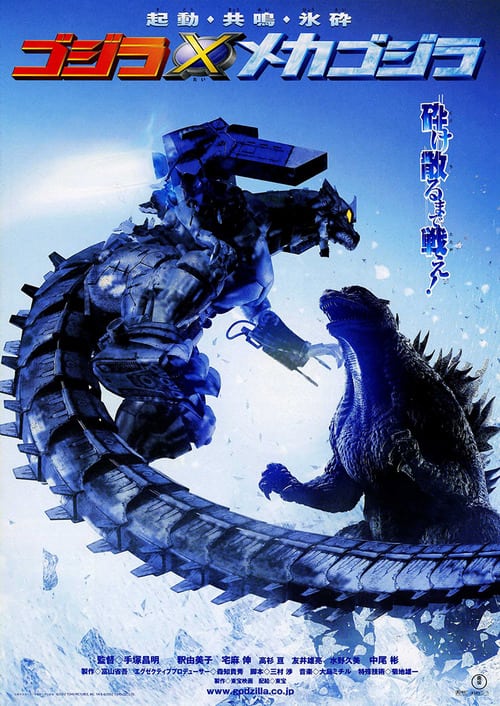
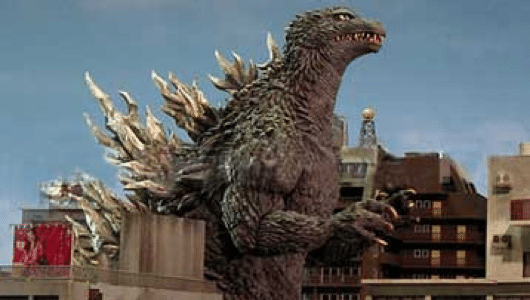
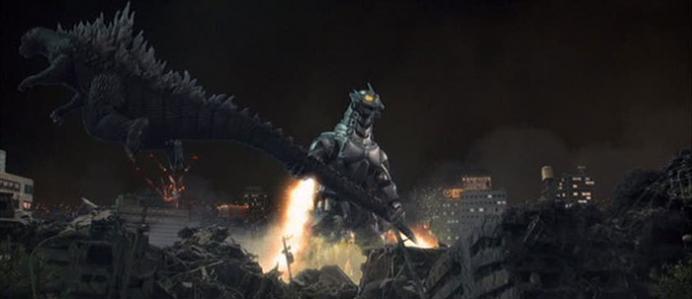



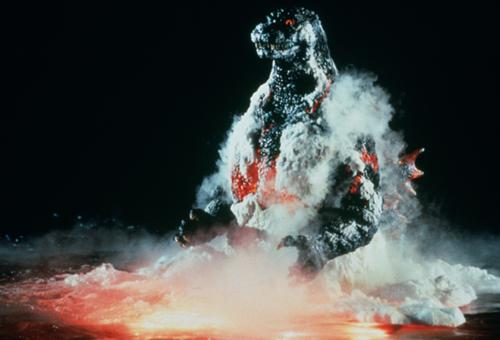
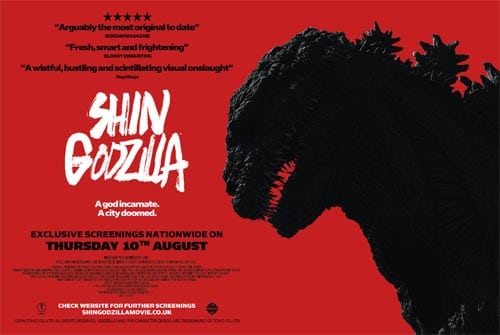
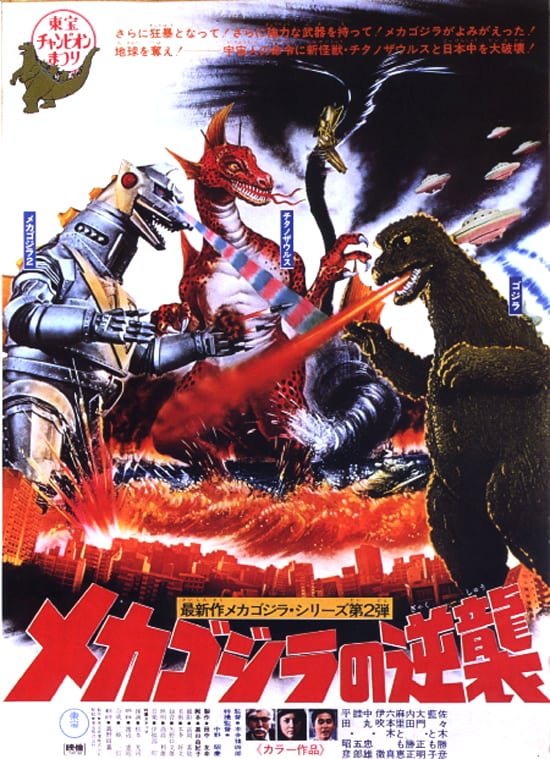
Be the first to comment